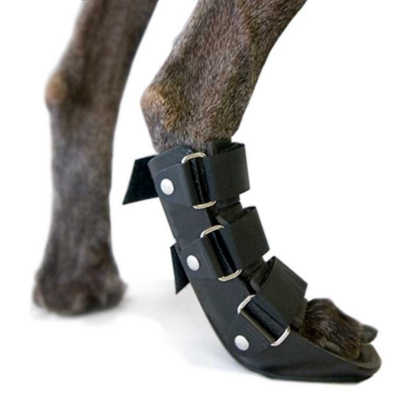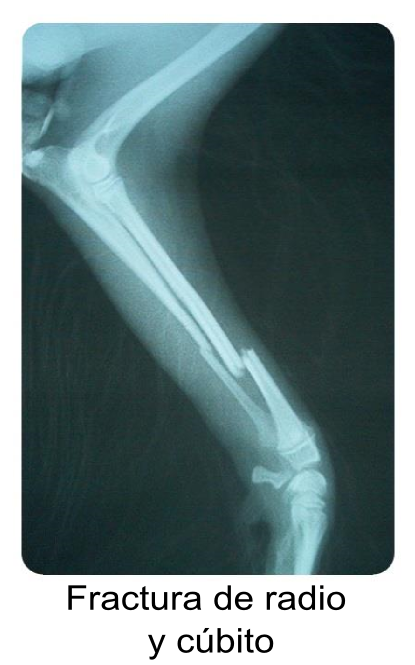
- Set a bone or joint in place to prevent further damages (emergency immobilization)
- Keep part of the limb immobilized to allow for the healing process to take place after an injury (long-term immobilization)
Emergency mobilization
Without first aid training, do not move the dog’s broken limb in order to prevent further damage to the area. The owners should follow certain guidelines when their dog suffers a fracture. The first is getting to the vet as soon as possible and moving the dog as little as possible during transport. If you have some knowledge of first aid, you can immobilize the injured area with a magazine or newspaper, tying or bandaging around the affected limb. Fractures located below the elbow or the knee and in the joints are more likely to worsen if the dog moves.
Long-term immobilization
Long-term immobilization is often used for fractured limbs, in some affected ligaments, tendons and joints and for some neurological problems (carpal hyperextension, avulsion of the brachial plexus, radial nerve palsy, tarsal hyperextension, proprioceptive deficits,…) It is also a very common process after surgeries affecting these areas.
Different materials have traditionally been used for immobilization: plaster, aluminum, simple plastic splints, thermoplastic material, fiberglass and resin. Special casts have also been used (Robert Jones, figure eight bandages) as well as braces (Ehmer, 90/90, Velpreau, carpal flexion). These procedures are indispensable for solving many orthopedic problems. It’s very important that they are applied under strict veterinarian supervision. They require specific knowledge and experience.
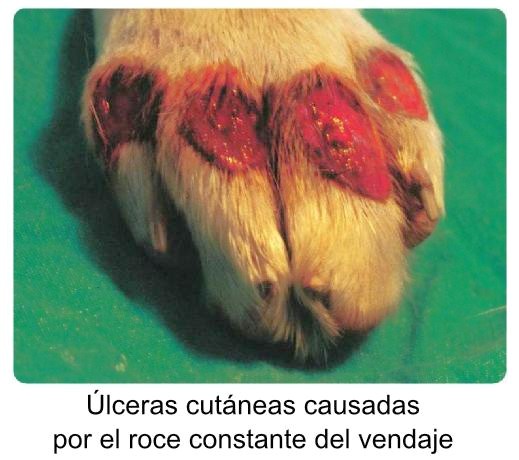
Long-term immobilization can involve complications: a lack of cushioning material can lead to wounds and injuries, while an excess may detract from the cast ability to immobilize. In addition, the material should be hypoallergenic and not retain liquids. It’s very important to apply the correct pressure on the dressing, since it can end up causing necrosis in the legs if the blood is unable to circulate properly through the limb. Whenever possible, it’s advisable to check the animal’s “feet” for swelling or a low temperature, which might indicate to us that there is excessive pressure. We should also note that most immobilization methods are complicated to carry out, as a result it is difficult to change them with frequency. This makes it difficult for us to detect possible problems (skin infection, bad bone alignment, wounds that don’t heal, ..)
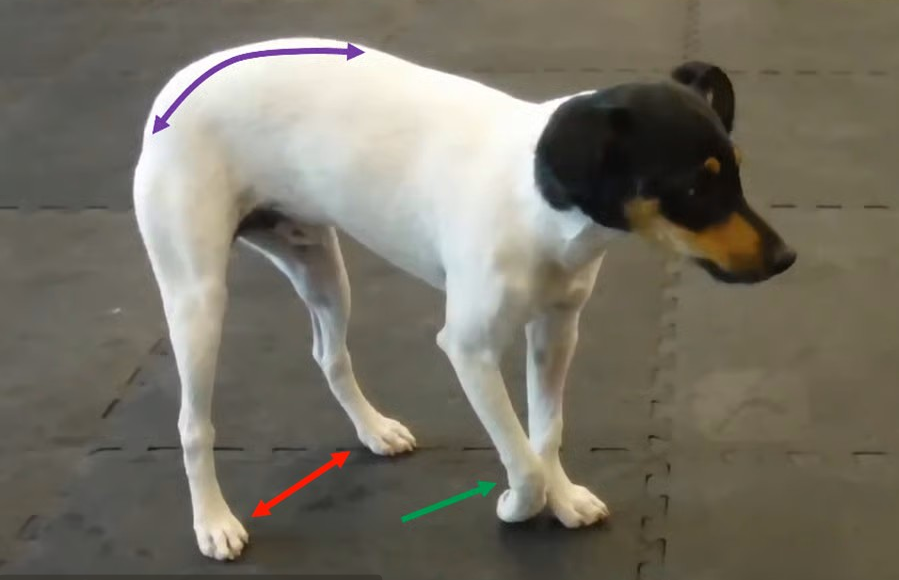
Typical forelimb posture in a brachial plexus avulsion. Image extracted from Anicura.
New-generation immobilization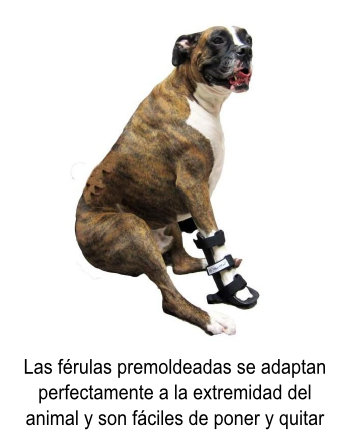
Due to the difficulty and possible problems that are associated with the traditional immobilization methods, currently the tendency is to use precast splints that replace the use of dressings, they can be removed and put on easily, even by the owner. There are different sizes, both for the front as well as back limbs. They are especially recommended for problems in the distal limbs (i.e.: hand, foot, wrist, ankles) having to do with bones, tendons or ligaments.
These canine splints can be used for cases of neurological deficits, neuropraxias and other problems of the brachial plexus and radial nerve. We can also use them for fractures, fissures or even for damages to the soft tissue that require a certain level of immobilization. They are most frequently used for carpal hyperextension, brachial plexus avulsion, tarsal hyperflexion, as a conservative treatment for uncomplicated fractures (always under veterinary supervision), or to immobilize a limb following trauma surgery.
What types of precast splints exist?
Front splint:
Total immobilization of the limb until the middle of the radius. Uses: phalangeal, carpal and metacarpal fractures. Extra support for fusion surgeries. Carpal hyperextension. Injuries in ligaments and tendons of the distal forelimb. Neurological problems: distal proprioception deficits (like some cases of brachial plexus avulsion)
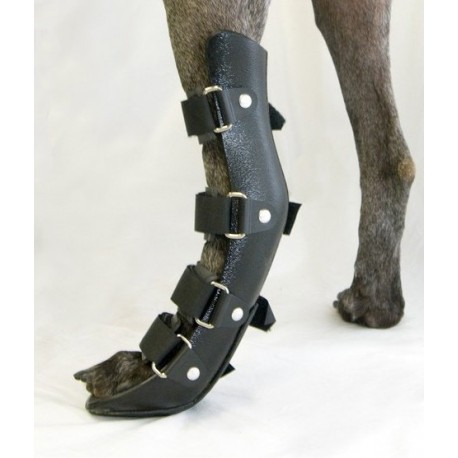 Back splint:
Back splint:
Total immobilization of the hindlimb up to the middle of the tibia. Uses: phalangeal, metatarsal and tarsal fractures. Extra support for fusion surgeries. Tarsal hyperflexion. Injuries in ligaments and tendons of the distal hindlimb, including the calcaneal tendon (Achilles tendon). Neurological problems: proprioceptive deficits.
Boot splint:
Short splint for hindlimbs. Uses: phalangeal or metatarsal fracture.
Neurological problems: proprioception deficits.
It is widely used for sciatic nerve injuries that result in irregular foot support (support with the back of the foot).
Ortocanis Veterinary Team



